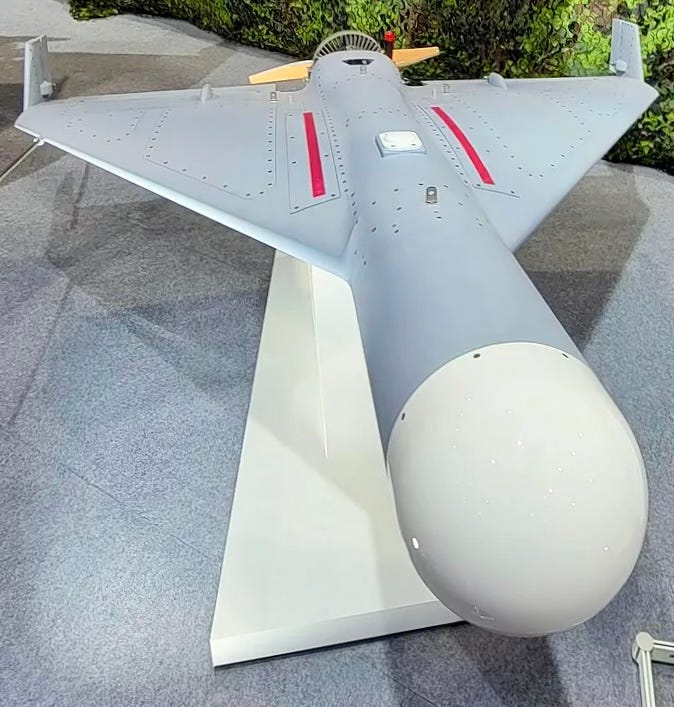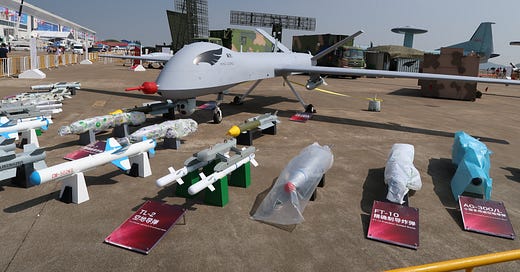For more information about Chinese UAVs, please consult: Chinese Fixed-Wing Unmanned Aerial Vehicles (2016) and More Chinese Fixed Wing UAVs (2019).
China In Arms BOOKSTORE and GIFT SHOP!
Twitter and YouTube Page and LinkedIn
Subscribe: $30 Annual
25 June 2025 (Wednesday)
China's UAV Influence on Iran
CH-1/3/5 and Wing Loong 1
By Wendell Minnick (Whiskey Mike) 顏文德
TAIPEI - One might assume that Chinese military technology is widely present throughout Iran.
While there is a long-standing relationship between the two militaries and ongoing technology transfers, Beijing has remained cautious about the extent of its military presence and influence within Iran.
China’s primary concern appears to be the potential violation of the internationally agreed-upon Missile Technology Control Regime (MTCR), which restricts the transfer of rockets and unmanned aerial vehicles (UAVs) capable of delivering a payload of at least 500 kilograms (1,100 pounds) over a range of 300 kilometers (190 miles).
Although China frequently disregards MTCR guidelines in its own military practices, it insists that Taiwan adhere to these restrictions. Additionally, though speculative, Beijing may also be concerned about its rocket and UAV technologies being used to deliver Iranian nuclear weapons.
China and Israel maintain a restrained yet transactional relationship at both diplomatic and defense levels.
In Iran’s case, China has facilitated access to drone and rocket technologies—either directly, through reverse engineering, or via third-party networks.
Iran’s Ababil UAV series, for example, clearly reflects design influences from China’s CH-1 and CH-3 drones. The Ababil serves as both a tactical surveillance platform and a loitering munition. The Ababil-5 has an operational range of approximately 480 kilometers.
The Shahed-129 is modeled on the Wing Loong 1, itself derived from the U.S. MQ-1 Predator drone.
The Shahed-136 is a delta-wing loitering munition influenced by China’s various efforts to perfect a long-range delta-wing configuration. Background reports indicate that Russia also manufactures the Shahed-136, though details remain unclear. In design, it closely resembles both the Israeli Harpy and Taiwan’s Chien Hsian drones.
Taiwan Chien Hsian drone:

The Karrar combat drone resembles the Chinese CH-5 in layout but is jet-powered and appears to incorporate design elements from Soviet-era target drones and Chinese UAV blueprints. It is a long-range UAV designed for both combat and intelligence/surveillance missions.





